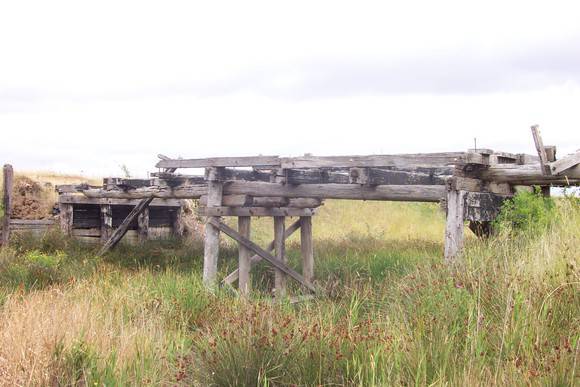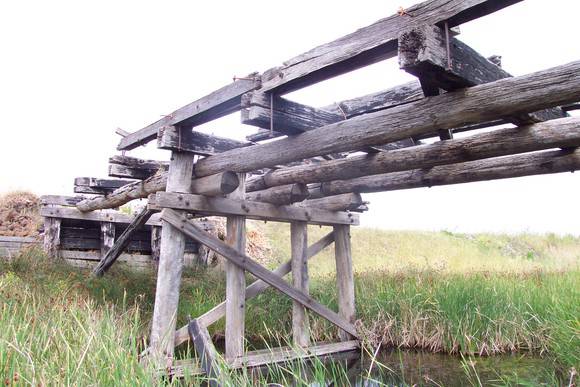| Back to search results » | Back to search page » |
|
HO136 - Beattys Bridge - 660A Beattys Road, Aintree
LocationBeattys Road AINTREE, MELTON CITY LevelIncluded in Heritage Overlay |
|
Statement of Significance
What is significant?
The remains of the timber bridge known as Beattys Bridge which
crosses Kororoit Creek and the stone cobbles located to the west of
the bridge. The 3-span bridge has unhewn piles, stringers and corbels
with large sawn cross beams and remnants of a circa 1930s longitudinal deck.
How is it significant?
The remains of Beattys Bridge and the nearby stone cobbles are of
local historical significance to the City of Melton.
Why is it significant?
Historically, the Beattys Bridge ruins are significant as the remains
of a timber vehicular bridge from the late 19th/early 20th century, of
which only a few remain in the City of Melton. Beattys Road had been
part of a major route from Melbourne to Ballarat. The crossing of the
road over Kororoit Creek has associations with both the nearby water
reserve and the Rockbank Inn which began as an early 1850s goldrush
wayside inn and was later used by the Beatty family as a residence for
about 90 years. The cobblestone road pavement is also associated with
this important crossing. (Criterion A) As one of only a few extant timber bridges in Melton, the remnants of
Beattys Bridge have the potential to yield information that could
contribute to an understanding of how the construction of timber
vehicular bridges evolved from the 1890s, when part of the extant
bridge was probably constructed, through to circa 1930s when the
superstructure of the bridge was likely changed. The cobbles located
to the west of the bridge are one of only a few knapped or cobbled
basalt roads that survive in the City of Melton. These roads, which
were constructed in the late 19th and early 20th centuries, have the
potential to yield information about early road construction in
Victoria. (Criterion C) The remnant structure of Beattys Bridge is of representative
significance as a timber bridge with a longitudinal deck that became a
standard type constructed by the Country Roads Board and municipal
councils post-1930. The use of round, unhewn log stringers and corbels
was common for road bridges that were constructed both during and
after the 1890s depression. (Criterion D)
Primary source
City of Melton Heritage Assessments Project 2018: Findings, RBA
Architects and Conservation Consultants (November 2018)
Group
Transport - Road
Category
Road Bridge





